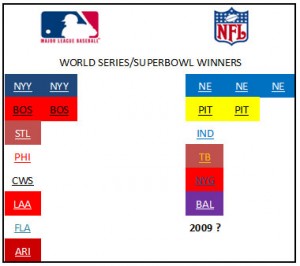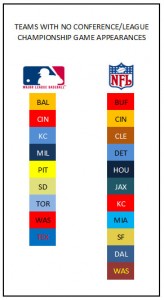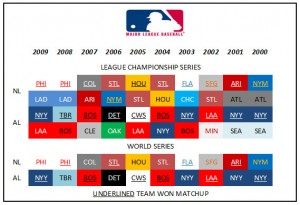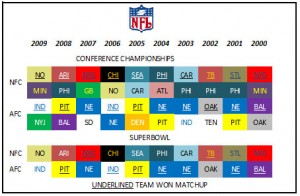Would a Salary Cap Mean Increased Parity for MLB?

Would a salary cap in baseball give more teams like the 2001 Arizona Diamondbacks a chance to compete for the World Series title?
Talking about a salary cap with a baseball player or his agent is as usually received as well as asking Tiger Woods how married life is treating him. The Major League Baseball Players Association (MLBPA) has a pretty simple stance on the concept of placing a ceiling on what teams can spend on wages, and that stance is “Nope!”
While purists still know that baseball is the American pastime, football is king these days in all real senses. It is outwardly more popular, has better television ratings (mostly since there’s so much less of it), and makes lots and lots of money. Oh, yes, it also has a salary cap. What’s more, NFL Commissioner Roger Goodell wants you to know that it is one of the main reasons the NFL is as great as it is, for it’s the salary cap and revenue sharing that create the NFL’s wonderful parity.
There is a continuum in professional sports where the concept of parity is concerned. In a nutshell, it tells us that the higher a team ranks in terms of league payroll, the less they care about parity. This is irrelevant for the NFL, because they have a salary cap.
Depending on your dictionary you might find twenty or more definitions for the term parity. One of them (close or exact analogy or equivalence) is the parity that Major League Baseball claims to care about, according the Commissioner Selig. Bud likes to tell baseball fans and anyone that will listen that MLB has great parity in this post-steroid era.

MLB had eight different World Series Champions in the decade, compared to six (or seven if the Saints win SB XLIV) in the NFL.
To be more specific, the parity that the Commissioner is referring to is competitive parity. This is not to be confused with market parity or economic parity. There is none of that. The Yankees and Red Sox are in a different economic league than the Royals and Rays, even though their letter head all reads “AL”.
There is revenue sharing in baseball in the form of luxury taxes on big market teams with big wallets. Selig and the owners would like equality economically, too – sort of. Hank Steinbrenner and John Henry could care less if the Royals could afford a $200 million dollar payroll, as long as the Yankees and Red Sox could still make all of their money and not have to hand any over to the little guys.
Teams like the Marlins or Padres would love economic parity no matter what because right now they’re like Oliver saying, “Please, Sir, can I have some more?”. The MLBPA could care less about economic parity as long as the minimum salary grows a little every now and then and as long as no one tries to limit the maximum salary.
Recently, a hornets’ nest has begun stirring over the revenue sharing because the low teams (the Marlins, in particular) don’t appear to be using the money they receive from the other teams to pay players. (In 2009 their total payroll was $36.8 million, which was dead last in the league.) Big market owners, including Henry, have begun to publically make comments questioning why all the luxury tax dough they’re paying isn’t being used the way it’s supposed to be. The Marlins got scolded by the league and then immediately went out and signed pitcher Josh Johnson to a four year, $36 million deal – their richest ever as a franchise. ESPN’s Jayson Stark wrote a piece on Friday about the impending brawl that he believes will come of this turn of events.

There were 11 NFL teams that didn't reach a conference championship game in the decade, compared to nine for MLB.
With debate abound about the ins and outs of it all, one can’t help wonder what reality lies beneath. Is there competitive parity in Major League Baseball? How does MLB compare with the NFL in terms of parity? Would the addition of a salary cap really create competitive balance?
First, let’s look at what competitive parity exists in the NFL. Looking at the seasons 2000 through 2009, if you count up the numbers of different teams that made it to their respective conference championship, the total comes to 21. Twenty-one different teams filled almost twice that many slots (AFC and NCF Championship games – four teams per year, ten years.) Just over half as many teams made it as could possibly have, so we’ll quantify that as a .525 relative parity rating (RPR). We call this relative because it says nothing about league size, just the number of spots available compared to the number of unique contestants.
In the Super Bowls for that same span of time, we have a quarter of the spots, assuming we only discuss winners. (To be clear, when we refer to the ’00 Super Bowl for this issue, we mean Super Bowl XXXV, played January 28, 2001.) Of the ten Super Bowls in this stretch, we’ve had six different winners and one (this year’s) yet to be determined. So far, using the same math as above, we’ve got a .600 RPR for the championships.
So, how about baseball? How does the free market MLB stack up to its companion with the salary limits?
Over the same time span of ’00 through ’09, and again looking at just the League Championship Series (ALCS and NLCS), the comparison is more than similar – it’s identical. Of the 40 spots available in those 20 matchups, 21 different teams made appearances, giving MLBN the same .525 RPR. Examined even closer, the similarities continue. The numbers of teams making repeat appearances is very close, as well. Both MLB and the NFL had four teams that made it three or more times. MLB had seven two-time repeaters to the NFL’s six. The remainders of both, of course, were all single entries (10 for MLB and eleven for the NFL.)

A total of 21 MLB teams made the Championship Series during the decade.
When the World Series matchups are tallied, we see that MLB actually surpasses the NFL. There were eight different winners of the World Series in our examined time frame, with the Yankees and Red Sox both taking two, or a .800 RPR. If Indianapolis beats New Orleans in Super Bowl XLIV on February 7th, the NFL’s rating stays at .600 for the decade. If The Saints pull it out, the NFL scores a .700, but still won’t beat baseball.
One more comparison is that of the teams that got left out. Teams that did not appear on our radar were nine for MLB and eleven for the NFL. From here then we can calculate what we’ll call our qualitative parity rating (QPR) as it factors in league size respectively.
For the NFL with its 32 franchises, leaving 11 teams out of the conference and league championship games given them a decade ration of 21/32, or a roughly a .656 QPR. Major League Baseball has only 30 teams and then showed a ratio of 21/30, or a nice clean .700 QPR to make it the clear, overall winner.

The NFL also had 21 different teams make championship game appearances during the decade.
What does any of this mean? Well, for the MLBPA, it means one less argument to have to defend when the subject comes up. If the last ten years are any indication, a salary cap is no way to balance the competition in comparatively sized leagues. For Bud Selig it means one less bullet in his gun when he debates wealthy teams about luxury tax or poor teams about spending on players.
Of course this method we employ doesn’t take many, many factors into consideration. Careers are shorter on average in the NFL as compared to MLB. (3.3 years NFL to 5.6 MLB). There is roughly ten times the amount of regular season games in MLB, and more importantly, getting to the milestones we’ve compared requires series wins in baseball as opposed to single game wins in football. The institution of “a salary cap” in baseball would not necessarily mean one without marked differences from the one in football.
Still, the numbers are arrived at in as fair a manner as possible and tell us that lately, the baseball diamond is just a bit more level than the gridiron. Go figure.
And just one more nugget for you “Vegas” minded folks – in the nine of the ten years examined, there was a small anomaly seen related to World Series winners and Super Bowl winners. In every year but two, when the AL won the World Series, the NFC won the Super Bowl and when the NL won the Series, the Super Bowl champs were from the AFC. At that rate, the Yankee’s win this year increases the Saints chances taking the big one next weekend.
[Sources for the career length stats –
NFL – http://www.livestrong.com/article/15527-long-average-career-nfl-player
MLB – http://www.sciencedaily.com/releases/2007/07/070709131254.htm














